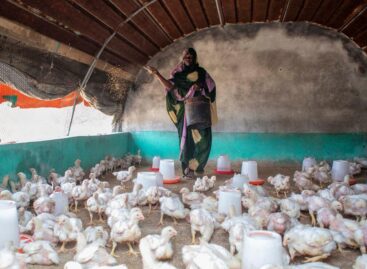FAO: Global food prices rose to more than a year-and-a-half high in November
Global food prices rose to their highest level since April 2023 in November, according to data published on the website of the Food and Agriculture Organization of the United Nations (FAO) on Friday.
 In November, the leading composite price index of international food commodity prices rose by 0.5 percent month-on-month to 127.5 points, the highest since April 2023. The November figure is 5.7 percent higher than a year earlier, but 20.4 percent below the peak of 160.2 points set in March 2022.
In November, the leading composite price index of international food commodity prices rose by 0.5 percent month-on-month to 127.5 points, the highest since April 2023. The November figure is 5.7 percent higher than a year earlier, but 20.4 percent below the peak of 160.2 points set in March 2022.
The FAO food price index is a trade-weighted indicator that takes into account the international market prices of the five most important food commodities – vegetable oils, cereals, meat, dairy products and sugar.
The FAO Cereal Price Index averaged 111.4 points in November, down 3.0 points (2.7 percent) from the previous month and 9.6 points (8.0 percent) from a year earlier.
International maize prices were unchanged in November, while global rice, wheat and barley prices fell month-on-month.
The vegetable oil price index rose 11.4 points (7.5 percent) month-on-month to 164.1 points, the highest since July 2022. The increase in the price index was driven by stronger international prices for palm, rapeseed, soybean and sunflower oils.
The dairy price index was 139.9 points in November, up 0.9 points (0.6 percent) from the previous month, and 23.4 points (20.1 percent) from a year earlier. International quotations for all dairy products strengthened in November, with milk powder rising the most on a monthly basis. World butter prices rose for the 14th consecutive month, reaching a record high in November on buoyant demand.
The FAO Meat Price Index averaged 118.1 points in November, down 0.9 points (0.8 percent) from the previous month but up 6.6 points (5.9 percent) from a year earlier. International prices for sheep, pork and poultry also fell in November, while those for beef remained broadly unchanged.
The FAO Sugar Price Index fell 3.1 points (2.4 percent) from a month earlier to 126.4 points in November, down 35.0 points (21.7 percent) from a year earlier.
Last year, the FAO’s average food price index fell by 13.7 percent after a 14.3 percent increase in 2022.
Related news
FAO: International food prices have been declining since September
🎧 Hallgasd a cikket: Lejátszás Szünet Folytatás Leállítás Nyelv: Auto…
Read more >FAO-Ministry of Agriculture Scholarship Program Continues
🎧 Hallgasd a cikket: Lejátszás Szünet Folytatás Leállítás Nyelv: Auto…
Read more >FAO: 2026 is the International Year of Rangelands and Pastoralists
🎧 Hallgasd a cikket: Lejátszás Szünet Folytatás Leállítás Nyelv: Auto…
Read more >Related news
Temu is crushing domestic webshops – Christmas won’t change either
🎧 Hallgasd a cikket: Lejátszás Szünet Folytatás Leállítás Nyelv: Auto…
Read more >The Hungarian Food Bank is putting together 44,000 food packages from the proceeds of ALDI’s first Advent market
🎧 Hallgasd a cikket: Lejátszás Szünet Folytatás Leállítás Nyelv: Auto…
Read more >How to prepare for the holidays with your four-legged friend
🎧 Hallgasd a cikket: Lejátszás Szünet Folytatás Leállítás Nyelv: Auto…
Read more >






